

|
Ecology |
|||
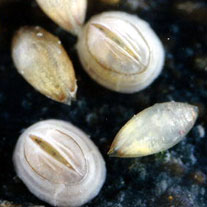
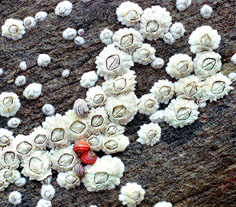
| Developement In the U.K., eggs are laid around November and retained within the mantle cavity where the eggs pass their embryonic development throughout the winter months. Subsequently nauplii are released during the spring bloom of algae. This is the first of six naupliar larval stages. The nauplius has lived some time swimming in the coastal plankton and undergoes a surprising metamorphosis to the cyprid, which is unable to take in food. The cyprid is specially adapted to locate suitable substrata for permanent fixation. Following fixation a second metamorphosis to the more familiar calcareous-shelled, adult form occurs. |
|||
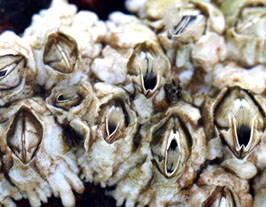
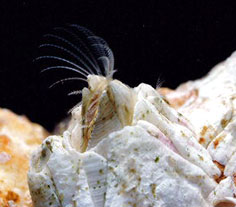
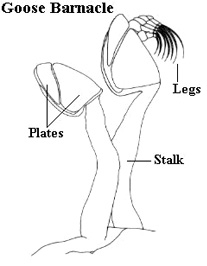
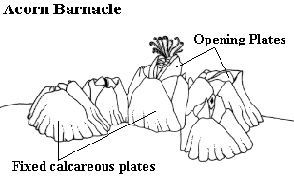
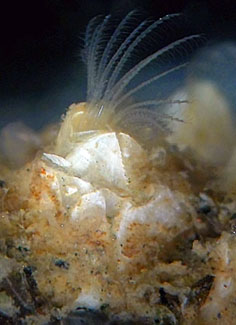
| Anatomy In the familiar barnacles the antennae are used as an attachment organ and there are six pairs of thoracic legs. The body is surrounded by pairs of fixed calcareous plates and is protected by another pair of plates which close the opening. Barnacles are divided into two groups: the acorn barnacles (Balanomorpha, see Fig. 1) in which the plates attach directly to the rock, and goose barnacles (Lepadomorpha, see Fig. 2) which are attached on the end of a stalk. A net of six pairs of long legs and cirri, protrudes from the cavity in which the animal lives and sweeps through the sea water to filter microscopic planktonic cells for food (see the pictures right). Through the adaptation and dispersal for its unnusual sessile life as a member of crustaceans barnacles were necessitated not only to obtain the calcareous shell for protection but to change the ways of feeding and reproducing. |
|||
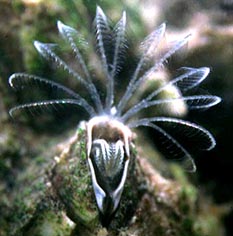
| Reproduction Living fixed on one spot has it's disadvantages. It is more difficult to find a partner to mate. If barnacles had sex, they would have to settle so that the neighbouring individuals have opposite sex for efficient reproduction, but such regular settlement seems impossible. Therefore, barnacles became cross-fertilising hermaphrodites and inseminate readily by living in dense colonies. At extremely low densities, post-settlement mortality of recruiting cohorts may become 100 %. That the method is successful is proved by the number of barnacles that can be found in many tidal areas. They can be so numerous that they cover every inch of rock. The adults can be observed very easily when you put a small stone with barnacles in a small tank. The larvae can be caught from the plankton with a plankton net. |
|||